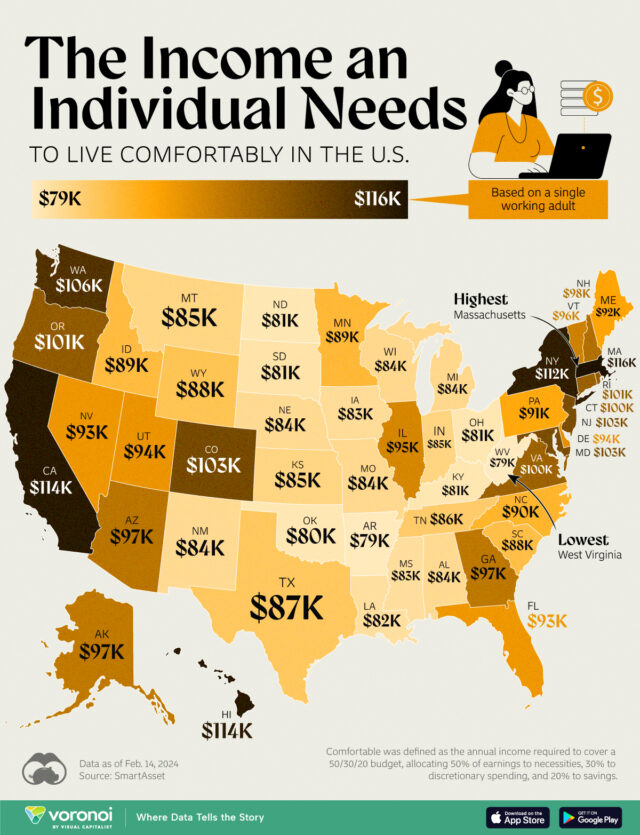Cost of Living in Major U.S. Cities: The Income You Need to Thrive
In order to maintain a comfortable lifestyle in some of America’s largest metropolitan areas, individuals and families face increasingly steep financial demands, a recent analysis by the personal finance site SmartAsset reveals. The study emphasizes that significant income levels are necessary not only for basic living expenses but also for savings and debt repayment.
Income Requirements for Individuals and Families
According to the findings, an individual must earn approximately $96,500 annually before taxes to cover essential living costs such as housing, groceries, transportation, and entertainment. A two-parent household with two children needs a substantial combined income of $235,000 for a comfortable lifestyle.
SmartAsset’s research, which focused on the nation’s 99 largest cities, pointed out that even more substantial salaries are required in large urban centers like Boston and New York City. The rising cost of living, fueled by skyrocketing housing prices and increased consumer goods prices, has posed significant challenges for many American families.
The Disconnect Between Salary and Living Costs
Highlighting a critical issue, Jaclyn DeJohn, managing editor of Economic Analysis for SmartAsset, stated, “Housing and the prices of essential goods have wreaked havoc on the cost of living in cities. This undoubtedly impacts how far income goes in major cities, as wages have not kept up.”
The income levels identified in the SmartAsset study are striking when compared to average salaries reported by the Bureau of Labor Statistics. This data indicates that the typical American earns between $62,000 and $73,000 a year. Furthermore, only 18% of individual Americans earn more than $100,000 annually, while approximately 34% of U.S. households fall into this earning bracket, based on 2023 analysis from Zippia.
Living Paycheck to Paycheck
Disturbingly, even among higher earners, financial stability remains elusive. A study from LendingTree revealed that around 40% of individuals earning $100,000 or more find themselves living paycheck to paycheck, indicating that income alone does not guarantee comfort.
Understanding Living Costs in Different Cities
SmartAsset utilized living wage statistics from MIT and applied the widely accepted “50-30-20” budgeting rule, which allocates 50% of income for necessities, 30% for discretionary spending, and 20% for savings and debt repayment. The analysis identified the following cities as the most expensive for comfortable living:
| City | Individual Income Required | Family Income Required (4) |
|---|---|---|
| New York City | $138,570 | $318,406 |
| San Jose, CA | $136,739 | $334,547 |
| Irvine & Santa Ana, CA | $126,797 | $291,450 |
| Boston, MA | $124,966 | $319,738 |
Cyrus Purnell, a personal finance expert with Financial Finesse, remarked on the ongoing struggles despite high incomes. He noted, “Couples earning $250,000 a year with a family of four find it challenging to locate affordable housing.” Many families resort to secondary employment, often through gig jobs, to meet their basic needs.
Reassessing Wealth in Urban Living
The findings from SmartAsset are part of a larger conversation around what constitutes financial prosperity in America. “For many years, earning six figures was viewed as equivalent to being wealthy,” Purnell explained. “However, one’s location and lifestyle conditions must be factored into that perception.”
As living costs continue to escalate, the conversation around economic stability and the income necessary for a satisfactory quality of life in urban settings is more relevant than ever.














